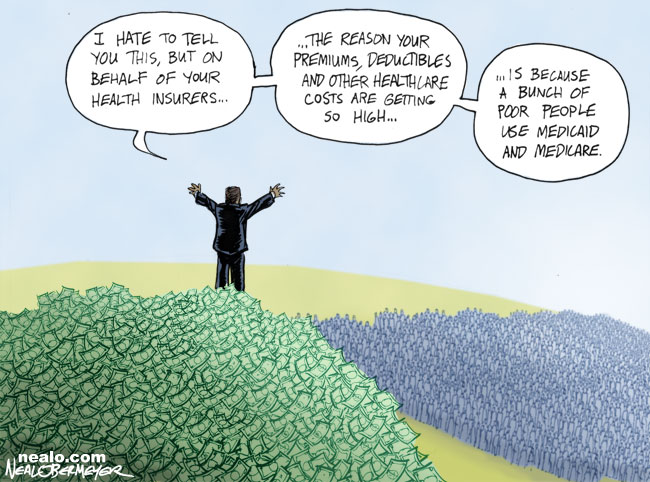26 Comments
From the Congressional Budget Office’s hot new white paper, “Options for Deficit Reduction“:
That’s all of the federal government’s spending in three graphs. The top graph is health care, including Medicare, Medicaid and the Affordable Care Act. The middle graph is Social Security. And then there’s literally everything else: Defense, education, infrastructure, food safety, R&D, farm subsidies, the FBI, etc.
What these three charts tell you is simple: It’s all about health care. Spending on Social Security is expected to rise, but not particularly quickly. Spending on everything else is actually falling. It’s health care that contains most all of our future deficit problems. And the situation is even worse than it looks on this graph: Private health spending is racing upwards even faster than public health spending, so the problem the federal government is showing in its budget projections is mirrored on the budgets of every family and business that purchases health insurance.
These graphs are built atop what’s called “the current policy” baseline. The current policy baseline assumes nothing changes. We don’t pass any new laws. We don’t follow through on the hard parts — like the cost controls in the Affordable Care Act — of any of the laws we’ve already passed. We don’t raise taxes.
That won’t work for very long. Page 9 of the report includes this remarkable statistic: If we just continue on the way we’re going, then “spending for Social Security, Medicare, other major health programs, defense, and interest payments” will “nearly equal all of the government’s revenues in 2020 and would exceed them from 2022 onward — leaving no revenues to cover any other federal activities, such as income security programs, retirement benefits for federal civilian and military employees, transportation, research, education, law enforcement, and many other programs.”
So we need to get health-care costs down. But because we can only do that so quickly, we’re also going to need to get taxes up.

